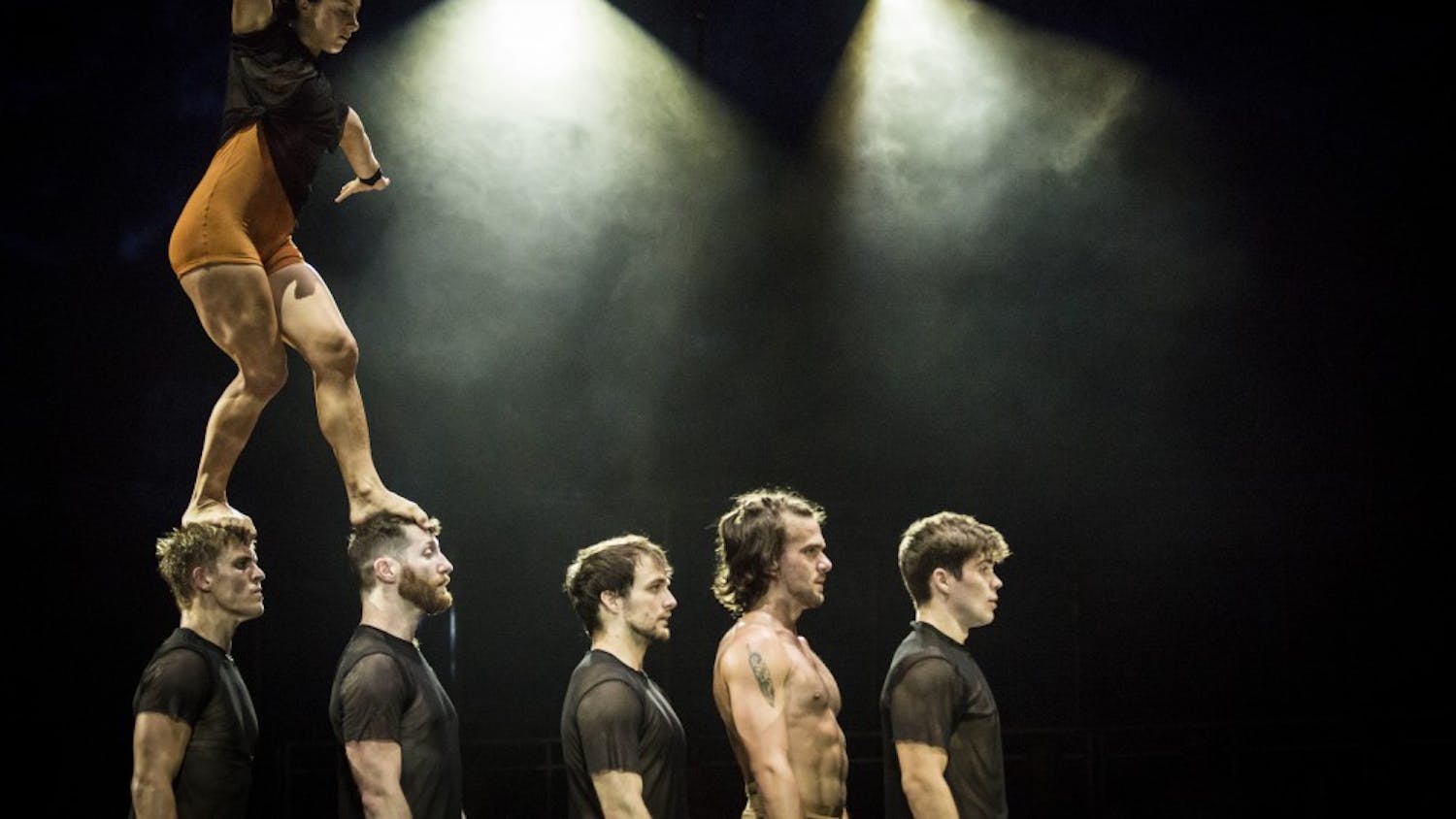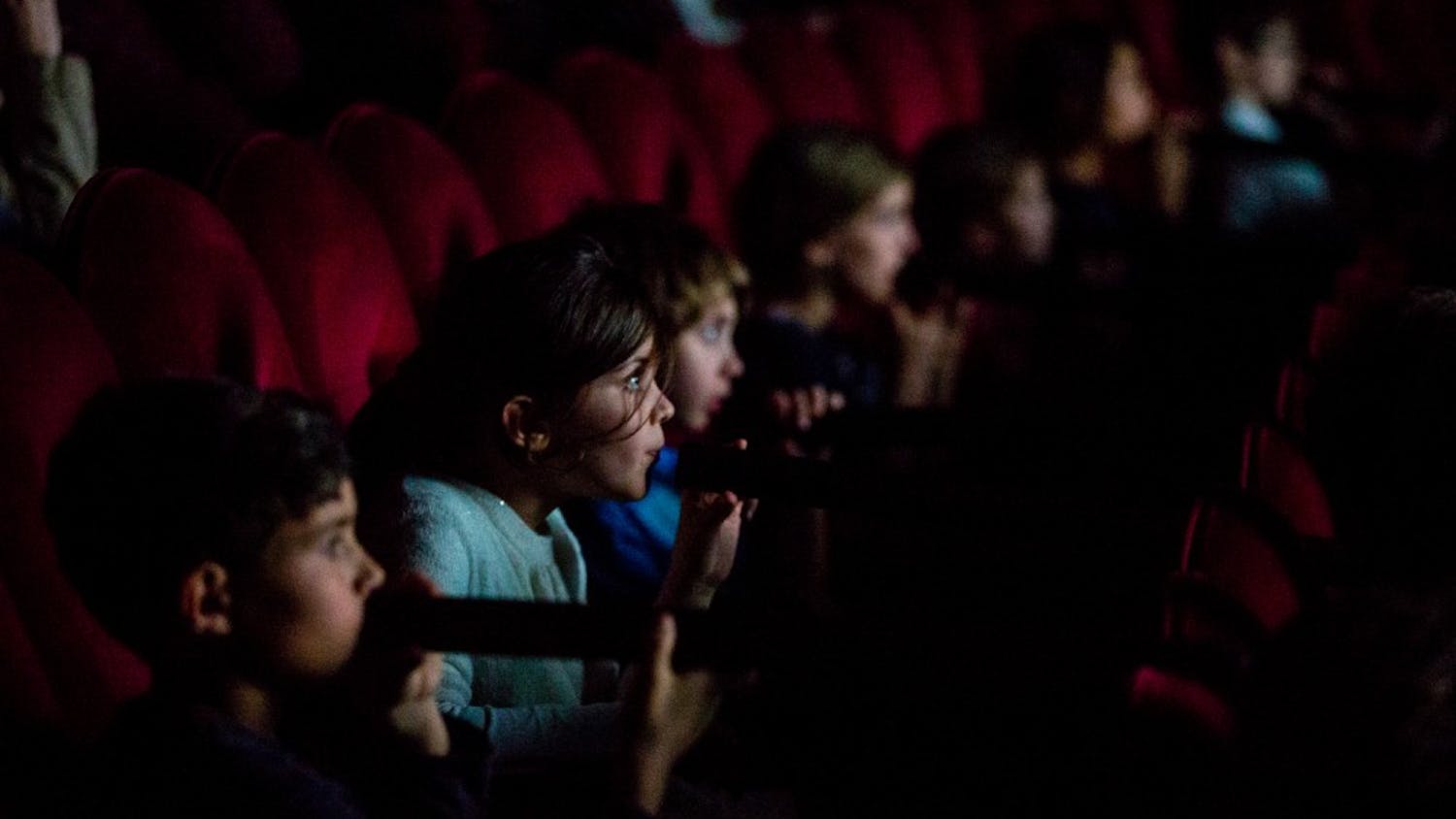What does space sound like? How do we see space, and what does it actually look like? These are just a few of the questions raised by the Hopkins Center’s film screening “Portal to the Sky: Cinema and Space” on Monday.
The event included a presentation of three short films on space and an introduction by film professor Jodie Mack and associate dean for the sciences Dan Rockmore. Following the films, physics and astronomy professor Ryan Hickox hosted a stargazing session on the Green. The event was billed as part of the SHIFT festival, the Hop’s summer series of live arts.
In line with SHIFT’s theme of humankind’s relationship with nature, Rockmore kicked off the film screening with a discussion on the connection between nature, math and space and how humans have always found meaning in the natural world. He took the audience through the scientific discoveries that have shaped our understanding of space — from Ptolemy to Brahe to Galileo.
Mack then introduced cinema into the conversation, covering the history of space and film, including the Death Star from “Star Wars” and “2001: A Space Odyssey.” Mack played music inspired by the movement of stars, with a piano, a cello and a violin representing different levels of energy emitted from stars in the supernova phase.
Rockmore and Mack’s introduction centered on the guiding theme for the evening: the intersection between a whimsical, artistic understanding of space and a technical, mathematical understanding. Bridging this divide between the creative and the scientific was my favorite takeaway from the event.
The first film, the four-minute “Lunar Almanac” by Chilean filmmaker Malena Szlam Salazar, shows the moon in its different phases. Salazar used 16 millimeter film, cut the film by hand and often used double-exposure, creating an experience of movement and transition.
While watching the film, I felt as if I were following the moon in a plane as it traveled through space. The film was silent, so all focus falls on the shifting moon. Occasionally, Salazar uses double-exposure, juxtaposing two or even three images of the moon side-by-side. This creates a feeling of circular time, where the moon always returns to a few recognizable phases. However, the film felt short and rushed, and I did not see the film’s connection to the theme of the event. Adding music might have helped viewers feel more connected to the film.
The second film, “Meridian Plain” by Laura Kraning, was an 18-minute compilation of archived NASA images accompanied by recordings from space. The images are in black and white, organized by type of geographic feature — for example, the images of mountains compose one section of the film, and close-up images of rocks make up another section. The overall effect is overwhelmingly eerie; the way Kraning sequenced the images made me feel like I was traveling across the landscape of a faraway planet.
This is a highly experimental film, and while Kraning must have meticulously pieced together the final product, at some points the length was laborious — did she really need 10,000 images of space? Perhaps 2,000 would have sufficed. Regardless, the film cemented for me that while we may have all of these images of space, humans have yet to put them together into a cohesive picture, resulting in this frenzied, 18-minute array of images.
The third and final film was Jeanne Liotta’s “Observando el Cielo,” spanning 19 minutes and shot on 16 millimeter film. The film took seven years for Liotta to produce and is a compilation of shots of the moon and stars from different locations around the earth, accompanied by the sound of low-frequency radio waves released by Earth’s magnetosphere as well as sound bites from the radio itself. Liotta filmed from locations across the United States at various times of the day, capturing the moon at its zenith, shooting stars and even the sunrise.
For me, this film encapsulated the theme of the evening. It is observational, featuring long-exposure shots that showed planetary bodies traveling through space. In this way, the film is very scientific. At the same time, however, Liotta painstakingly arranges these shots to show the diversity of human experiences with the cosmos. Sometimes the shots are blurry, when an astrological body is moving; sometimes the bodies are out of focus, making them feel more enigmatic. The film strays away from the scientific in this way, by making the shots feel more human.
We will likely never touch a star or stand on a faraway planet in a faraway galaxy. Making these shots feel less polished — further heightened by Liotta’s choice to use 16 millimeter film — combines an astronomical understanding of space with an imaginative one. Liotta’s film shows that space is something we are all curious about.
“Portal to the Sky: Space and Cinema” provoked consideration of the relationship between humans and the natural world, and proved to be an inspiring addition to the SHIFT festival’s summer program.



